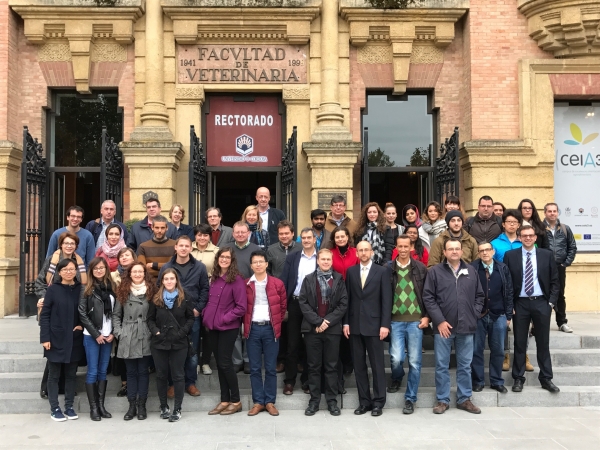Converting any kind of waste into a usable material is a challenge for science. When the 'Photo4Future' project began in 2015, the goal was to turn wheat waste from a U.S. company, Ardent Mills LLC, into titanium dioxide-based materials for photocatalytic processes. TiO2 is an inexpensive and robust material boasting excellent ultraviolet light absorption, and is capable of acting as a photocatalyst in UV-assisted processes, but needs modification to act under sunlight.
The FQM-383 research group at the University of Cordoba, responsible for the project, has succeeded in synthesizing a catalyst from these cereal wastes and activating it with sunlight, which means economic and energy savings for the sector. This type of chemical process is known as ‘photoredox catalysis’.
The wheat waste problem solved by the Cordoba team led to an industrial collaboration with the company Ardent Mills LLC in the United States, where they continued research related to the type of waste they were dealing with at that time. The company was interested in the recovery of the waste itself, explained the researcher in charge of the study at the University of Cordoba, Rafael Luque. "Not so much in the materials or in the photochemical process, but rather in the integral recovery of the waste, as well as the different fractions that we could extract, and in the opportunities we had in this regard".
Therefore, the objective was to give the waste in question multiple outlets for recovery, and to obtain high-value compounds contained in it; in short, to achieve its integral use.
Although waste recovery was where they saw the study’s maximum potential, they also studied other types of titanium-based materials that serve to accelerate photochemical reactions and put new photocatalysts on the market, such as those used to degrade polluting compounds in water.
According to professor Rafael Luque, "the future challenges related to photochemistry are fundamentally based on selective processes" and this study, which began with the objective of recovering agricultural waste, has allowed us to find applications for photocatalysts in other sectors, such as pharmaceuticals.
Thus, the initial idea was based on three pillars: the synthesis, design and development of nanomaterials for photocatalytic applications; organic chemistry and continuous-flow photoredox reactions applied to the pharmaceutical industry.
Proffesor Luque summed up the most notable results after the completion of the project as "the development and synthesis of this type of nanomaterials for photochemical processes and the collaboration with the companies Ardent Mills LLC and Janssen".
According to the UCO researcher, when they started the project they never imagined the impact it was going to have on the line of nanomaterials for photoredox processes applied to the pharmaceutical industry. But, after analysing the results, they verified that it boasts great potential, having been a successful line that has recently received funding from the Junta de Andalucía. "We have managed to develop a series of both intermediate and end continuous-flow products of the photoredox reaction type, now being further investigated in detail and developed with a view to medications, per se."
The development of these works has allowed them to get involved in a satellite project related to flow processes, but assisted by mechanochemistry, with materials similar to those already used in the Photo4Future project, in collaboration with the Swiss-based company Deasyl.
The PHOTO4FUTURE project - "Accelerating photoredox catalysis in continuous-flow systems" (H2020-MSCA-ITN-2014-641861) has been funded by the European Union through the H2020-MSCA-ITN-2014 call.
"This report is part of the project “CONSOLIDA-UCO ECT2020-000810", funded by MCIN/AEI/10.13039/501100011033 and by European Union “NextGenerationEU”/PRTR”.


